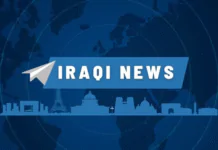Good Morning ,
ISO 20022 Goes Live: The New Global Language of Finance Arrives
The world shifts to a unified, data-rich messaging standard powering the next generation of payments.
Overview
- ISO 20022 officially replaces older payment-message formats, bringing a universal, structured XML standard to global finance.
- Banks, payment systems, and central infrastructures now communicate using a harmonized data language—reducing errors, delays, and manual interventions.
- Both domestic and cross-border systems adopt the standard, including Fedwire, FedNow, SEPA, CHAPS, TARGET2, and SWIFT’s CBPR+ environment.
- The November 2025 SWIFT deadline ends the coexistence period, making ISO 20022 mandatory for most global payments.
- Richer data fields improve transparency, fraud detection, sanctions screening, and automated reconciliation for businesses and banks.
Key Developments
- A Universal Financial Language
ISO 20022 replaces fragmented legacy formats (like SWIFT MT messages) with a modern, structured XML format capable of carrying far more detailed data—street names, building numbers, invoice IDs, purpose codes, and more. - End-to-End Interoperability
With every major payment rail moving to the same data standard, financial institutions can “speak the same language.” This eliminates translation errors and enables seamless communication between countries, banks, and payment networks. - Boosted Automation and Reduced Costs
The consistency of ISO 20022 enables true straight-through processing. Messages flow from sender to receiver without losing data. Fewer manual fixes mean faster payments and lower operational costs for institutions. - Enhancing Compliance and Fraud Detection
Richer data allows automated systems to screen for sanctions, monitor suspicious activity, and reduce false flags that delay transfers. Regulators gain clearer insights into transaction flows across borders. - Not Just for Cross-Border Payments
Although SWIFT’s cross-border migration gains attention, ISO 20022 is equally transforming domestic payment systems. Fedwire, FedNow, SEPA, TARGET2, CHIPS, and CHAPS either migrated or are finalizing their transitions. - Not a Crypto Standard — But Crypto Can Integrate
ISO 20022 is designed for traditional finance, not cryptocurrency tokens. No crypto asset is “ISO 20022 compliant.”
However, blockchain platforms that want to integrate with banking systems may adopt its message formats for smoother interoperability. - A Technology Upgrade, Not a New Financial System
ISO 20022 does not replace SWIFT, Fedwire, banks, or settlement rails.
It is the language they use—enabling modernization without rebuilding the global financial architecture.
Why It Matters
ISO 20022 represents one of the most significant upgrades to the global financial system in decades. By standardizing how payment information is structured and transmitted, it strengthens transparency, reduces friction, improves global compliance, and sets the stage for advanced automation. For everyday users, this means faster, more accurate, and more traceable payments—while institutions gain the data foundation needed for next-generation financial services and digital-asset integration.
Implications for the Global Reset
Pillar: Digital Payments Infrastructure
ISO 20022 is one of the backbone technologies enabling the shift toward high-speed, data-rich, globally connected payment systems. Its adoption supports interoperability between central banks, commercial banks, payment rails, and future digital currencies.
Pillar: Regulatory Transparency & Financial Crime Prevention
The move toward structured, granular data strengthens compliance regimes worldwide. Regulators gain unprecedented visibility into flows of money—an essential requirement for the more transparent, interoperable system emerging across global markets.
This is not just politics — it’s global finance restructuring before our eyes.
Seeds of Wisdom Team
Newshounds News™ Exclusive
Sources
- NICE Actimize – “Preparing for the ISO 20022 November 2025 Deadline”
- Integrated Research – “What Is ISO 20022 and How Is It Changing?”
- FNBO – “Fedwire’s Move to ISO 20022: What It Means for Your Business”
- SWIFT – ISO 20022 Migration Resources
- U.S. Federal Reserve – Fedwire ISO 20022 Migration Updates
~~~~~~~~~~
Central & South Asia: A Region on the Edge of Transformation
Economic surge, strategic competition, and renewed conflicts reshape the Eurasian heartland.
Overview
- Rapid economic and demographic growth in Central Asian states is raising the region’s global strategic significance.
- Intensifying great power competition: Russia, China, India, Iran, and the United States are increasing political and economic engagement.
- Renewed India–Pakistan hostilities and ongoing Afghan–Pakistani tensions produce security risks for South Asia and spillover effects into Central Asia.
- Shifting trade patterns: Afghanistan is pursuing closer ties with Central Asia to reduce dependency on Pakistan.
- Regional stability now hinges on diplomacy, economic diversification, and external actors’ policies.
Key Developments
- Strong Central Asian Growth
Central Asia recorded above-average GDP expansion in 2024, with Uzbekistan, Kazakhstan, Tajikistan, and Kyrgyzstan registering growth rates that surpass many other regions—driven by resource exports, investment, and demographic gains. - US Engagement and the C5 Summit
The recent C5 meeting hosted at the White House underscores renewed American strategic attention; Washington seeks to shape economic and security cooperation across the five Central Asian states. - India–Pakistan Escalation
The May 2025 Operation Sindoor and attendant clashes revived the most serious India–Pakistan confrontation in years. Both capitals are modernizing forces and preparing for potential future escalations. - Afghanistan–Pakistan Breakdown
Relations between Kabul and Islamabad have deteriorated since the Taliban’s return to power. Border clashes, trade closures, and diplomatic friction are driving Afghanistan to diversify trade toward Central Asian partners. - Trade Realignment and Economic Interdependence
Afghanistan–Central Asia trade approaches $1.7 billion and is growing. Kazakhstan and Uzbekistan emerge as key partners, with bilateral roadmaps targeting substantial trade increases.
Why It Matters
Central and South Asia sit at a strategic fulcrum between Europe, East Asia, and the Middle East. Rapid economic expansion in Central Asia creates new markets, labor pools, and resource corridors—but this growth occurs amid intensifying geopolitical rivalry and fresh security shocks.
For investors, policymakers, and regional stakeholders, these trends offer opportunities (trade, infrastructure, and energy cooperation) and risks (military escalation, refugee flows, and supply-chain disruptions). The balance between outside influence and local statecraft will largely determine whether the region becomes a stable growth corridor or a persistent zone of confrontation.
Implications for the Global Reset
Pillar: Geoeconomic Realignment
Central Asia’s rising GDP and demographic weight feed into a broader geoeconomic shift—new trade corridors, alternative energy linkages, and investment flows will reshape Eurasian connectivity and the global distribution of economic power.
Pillar: Security & Governance
The fusion of authoritarian stability and rapid growth in some states creates governance dynamics that external powers will seek to influence. Stronger surveillance of border security, arms modernizations, and regional rivalries could catalyze new alignments and alter global defense posture.
This is not just politics — it’s global finance restructuring before our eyes.
Seeds of Wisdom Team
Newshounds News™ Exclusive
Sources
- Modern Diplomacy – “Central and South Asia on the Path of Transformation and Conflicts”
- Reuters – “Afghanistan-Pakistan peace talks collapse, ceasefire continues, Taliban says”
- World Bank – “Central Asia Economic Update 2024–2025”
- Stimson Center – “Four Days in May: The India-Pakistan Crisis of 2025”
~~~~~~~~~~
Seeds of Wisdom Team RV Currency Facts Youtube and Rumble
Newshound’s News Telegram Room Link
RV Facts with Proof Links Link
RV Updates Proof links – Facts Link
Follow the Gold/Silver Rate COMEX
Follow Fast Facts
Seeds of Wisdom Team™ Website






